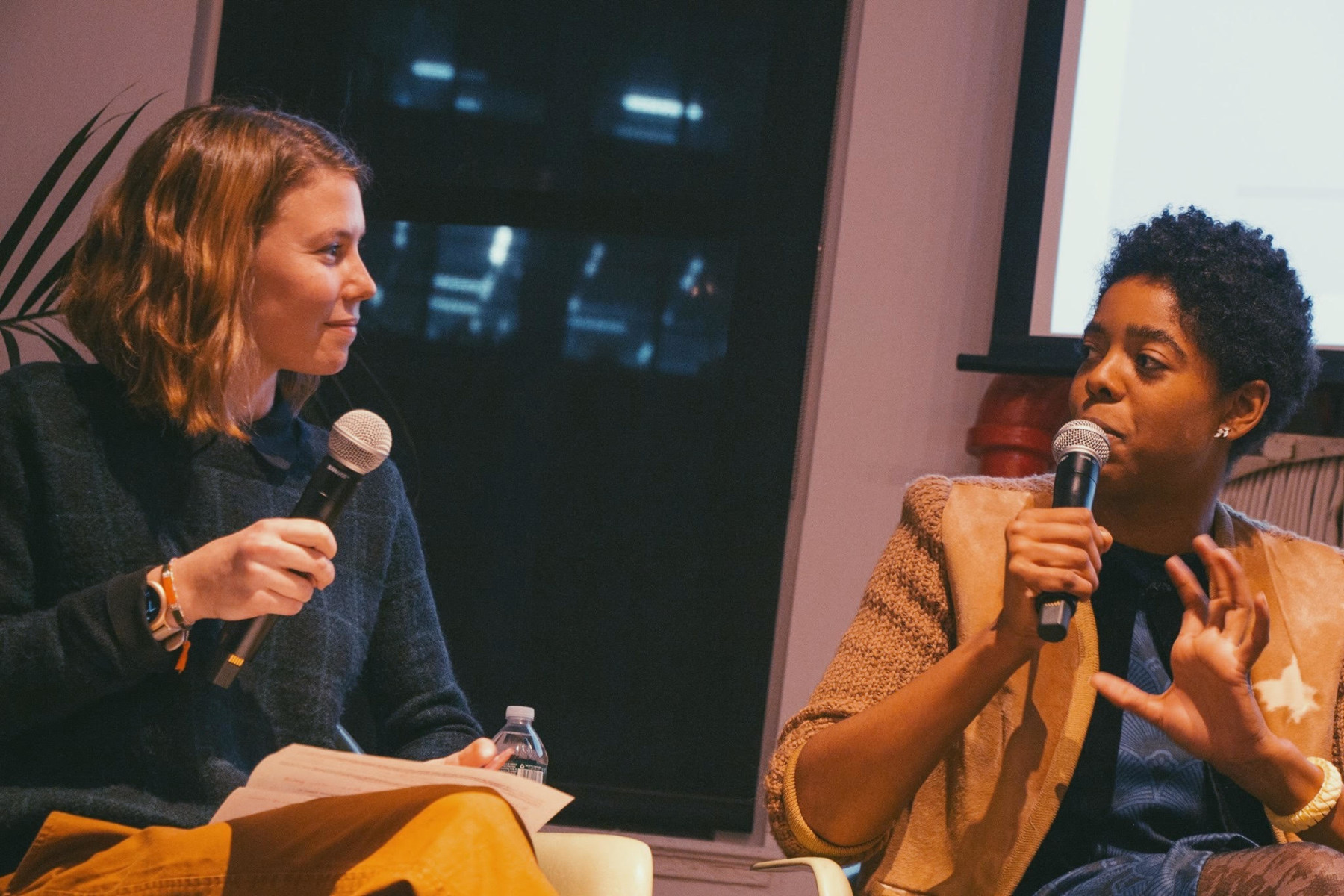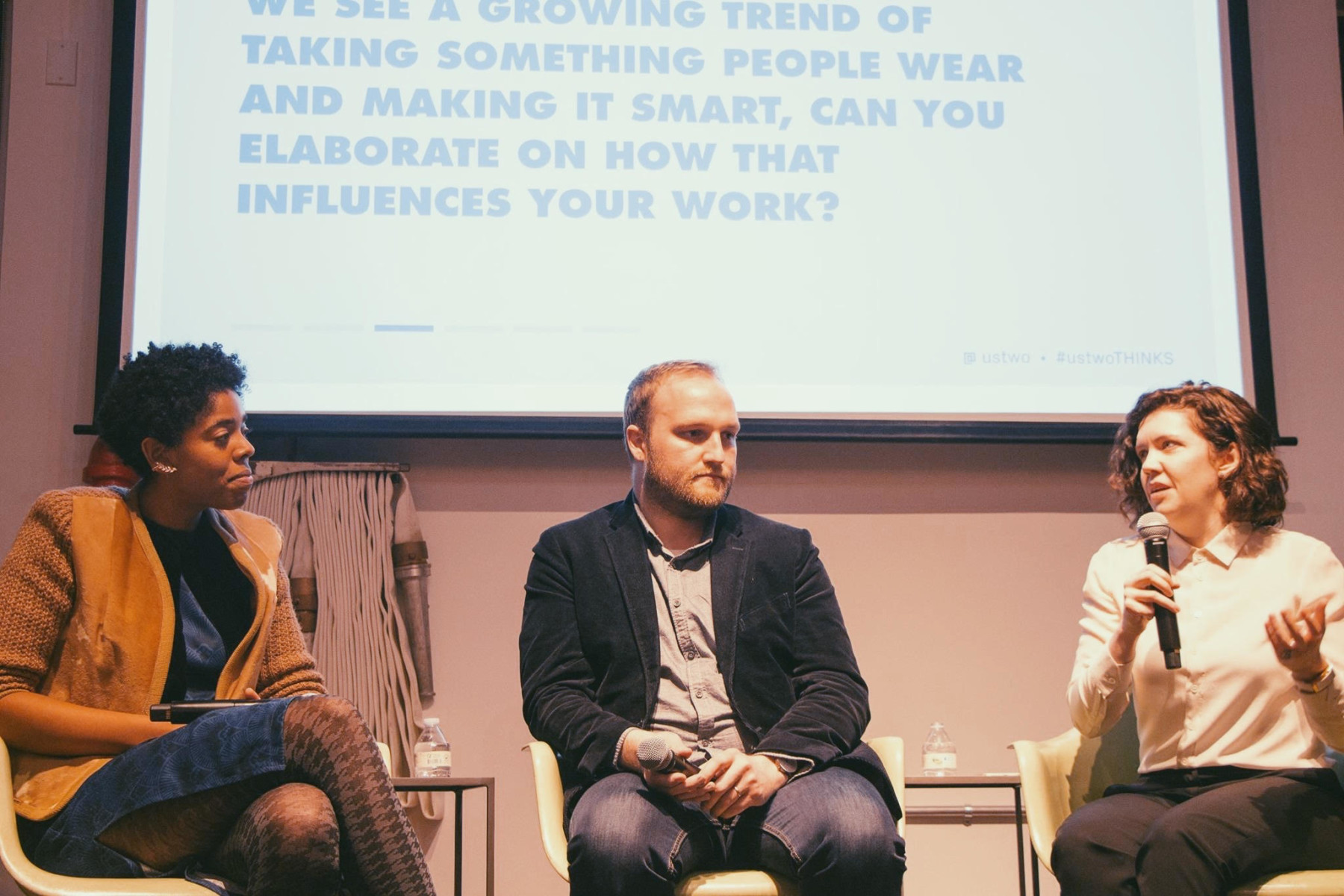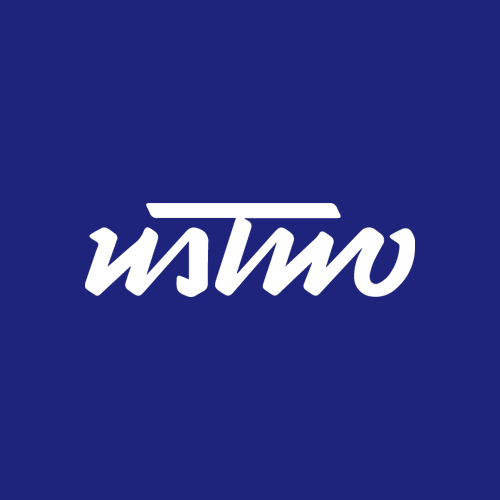Have Wearables Hit Their Tipping Point?
ustwo has been working in the wearable space since 2014. In partnership with Google, our team has launched 50+ watchfaces to the Google Play Store and partnered with several brands to bring their products to the Android Wear platform. As a team we wanted to take a step back and reflect on why these devices, that promised to transform our lives, are still not leaving the luxury market. By broadening our scope of what wearables are capable of, we sought to understand how to better design for the wearable future.
For ustwoTHINKS: Wearables Beyond Watches, we hosted 100+ tech enthusiasts and industry hopefuls in our studio for the evening, to hear four uniquely qualified and passionate wearable veterans challenge the wearable use case and discuss the current state of technology behind what’s on the wearable market today.
Our expert panel included Dan Seifert, Senior Editor at The Verge, José-Manuel Villanueva, Senior Product Designer at ustwo NYC, Madison Maxey, Co-founder of Loomia, and Nora Levinson, Co-founder of Caeden.

So what did our panelists say would be the wearable tipping point?
Madison Maxey, of Loomia: A lot of it comes down to having a wide diversity of products in the market from brands that people recognize and brands that are new. It’s often hard to trust a startup that is willing to take a risk and can deliver a new product but you like to buy your things from J. Crew, and then suddenly you are buying it from this new brand it’s hard to get the same dopamine rush as you do when you buy yourself something from a company you really like.
It’s fun to think you can be the first, or the pioneer, or the only but I think the tipping point is really when you can choose between two of your favorite brands to buy a heated jacket. To buy an emotion responsive, safety, running jacket from Lulu Lemon or from Nike, that’s the tipping point, when you have options, and hopefully startups can play among those options, that will be when the industry really grows.
Dan Seifert, Sr. Editor at the Verge: I think it has a lot to do with re-defining what we think of when we hear ‘wearable’. That name [wearable] has been relegated to really specific things and hasn't really included a lot of things that ARE wearables, because they are pieces of technology that you wear on your body like your wireless headphones, clothes, shoes, or your belt. There is going to be a point where a lot of things will have integrated tech, where we would not have thought of them as having tech initially. Whether it’s Snap’s Spectacle Glasses: they are sunglasses, they are a wearable piece of technology, they have a camera in them, a battery and they talk to your phone, and they do all this other stuff. But, that is not a wearable in the sense of something that you wear on your wrist, or a pendant, or a ring.
I really think that it is re-defining what wearables are and a broadening of the horizon. Technology is NOT stopping and it is going to be in everything, and it is going to be in everything we buy, whether it is our clothing, our accessories, homes, cars, hopefully we won't have cars forever. We won't even be thinking of them as wearable anymore, it will just be another part of our life and another product in our life.
Nora Levinson, of Caeden: Wearables will become ubiquitous when they are able to integrate with clothing items, pieces of jewelry… things we would choose to wear anyway. To be honest from a technology perspective, I think, outside of the use cases, the single biggest technology stumbling block is battery. All batteries [lists types] are about volume. As you start having more and more use cases, you need more and more batteries, and the battery needs to become bigger, it gets more and more clunky, and then you have people saying: “I don’t care what user interface you build, I am not going to wear this because it is the size of my whole hand.”
I think if somebody can come up with a type of battery or powering solution, and we are already seeing a lot of that, using motion or harvesting power from sweat, but they are still very much in the R&D side of things, if any of those become actually commercializable, then I think that will change the game. But right now, it is a two fold question of: How do you take the technology and engineering requirements of what you need to do, exactly as Maddy was talking about, AND how do you continue to diminish those technology components so that the wearable component, whether it is the clothing aspect or the jewelry aspect, it at the forefront and that it is not something you have to think about constantly charging. People’s minds are saturated with that. The true ubiquity will happen once the technology disappears.

José-Manuel Villanueva, of ustwo: I want to bring it back to the human aspect of things, which goes back to the people who have been working on wearables in the last three years, which is all of us here. What can we do to find moments where we can say: “Ok! Let’s stop the machine, and understand how we can collaborate together?” And I feel that is something that, our team here [at ustwo], can benefit from. We are in the trenches day-to-day, trying to understand how people are going to interact with our products. But there is a bigger question, which is, who else is working on this, resolving aspects that I haven’t even thought about?
That is why I feel that the tipping point will be having honest conversations, like we are having tonight, and designing a collaboration so that we can exchange notes and make a better product. I would say that users are with us. I was reading research the other day that said: Users would get a wearable if they understood what the benefit was, or had a clear value proposition. Right now they [users] still don’t get it, so the responsibility is on us to get together and figure it out and collaborate more than we actually are.
If you missed our ustwoTHINKS event, you can check out the audio recording of the panel on SoundCloud, and learn more about ustwo's work with Android Wear on our What We Do page. For our team, this evening was about learning and starting to ask the really big questions about what the wearable future looks like and how we, as a product studio, can help challenge and push forward in this space.
Embedded content: https://soundcloud.com/ustwo-fm/ustwothinks-wearables-beyond-watches
